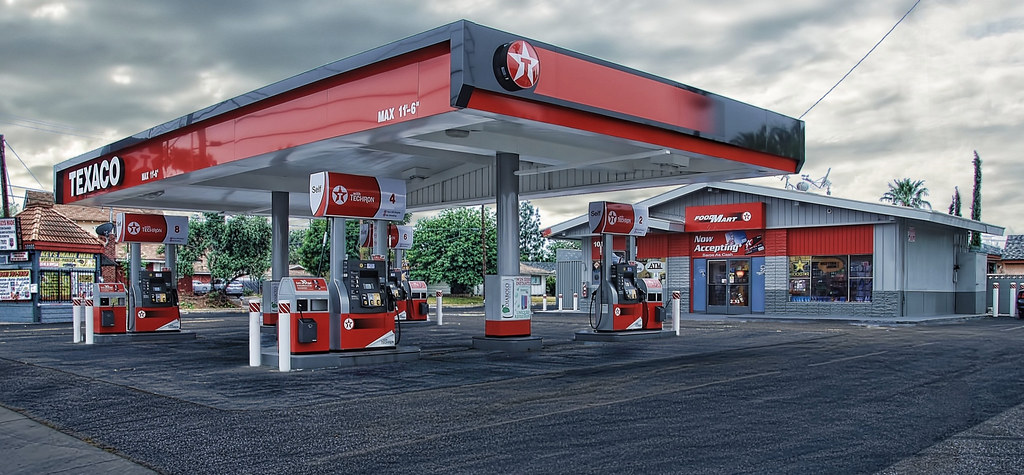
Merging onto the highway is undeniably one of the most challenging and, for many, stressful lessons absorbed during driver’s education. It’s a driving maneuver that demands a unique blend of sharp reflexes, an understanding of traffic laws, and a keen sense of awareness, all while navigating highly unpredictable conditions. Every highway entrance presents its own set of variables, from traffic density to the behavior of other drivers, making a one-size-fits-all approach impractical.
However, mastering this crucial skill doesn’t have to be a source of anxiety. With the right techniques and a clear understanding of the road dynamics, you can transform your merging experience from a white-knuckle moment into a smooth, almost effortless transition. This guide is designed to empower you with the actionable advice and practical hacks needed to merge safely, efficiently, and courteously, ensuring you integrate seamlessly into the flow of traffic without ever cutting off another car or causing unnecessary friction.
We’re going to break down the core principles that will not only boost your confidence but also significantly enhance your safety and the safety of those around you. These aren’t just theoretical rules; they’re tangible strategies for smarter driving, ensuring you’re always in control and making informed decisions on the road, no matter the conditions. Let’s dive into the foundational techniques that lay the groundwork for becoming a merging pro, transforming a daunting task into a practiced, productive skill.

1. **Building Up Speed: The Essential First Step for a Smooth Entry onto the Highway**: The absolute first principle of merging safely is to align your vehicle’s speed with that of the traffic already flowing on the highway. This isn’t merely a polite suggestion; it’s a fundamental safety requirement that dictates the success of your merge. Your acceleration lane, whether it’s an extended entrance ramp or a dedicated stretch for joining the main road, is specifically engineered for this singular purpose: to allow you to quickly gain the necessary speed *before* your actual merge point. Failing to accelerate sufficiently means you’ll enter a high-speed environment as a dangerously slow-moving obstacle, a direct recipe for chaos and potential collision.
Attempting to merge at a significantly slower speed than the existing highway traffic is a critically common mistake that inevitably creates genuinely perilous situations for everyone involved. Imagine the scenario: cars are approaching you at high velocities, perhaps 65-75 mph, while you’re still lagging at 40-50 mph. This drastic disparity in speed forces other drivers to react suddenly and defensively, often by braking hard or swerving. This disruption in flow can easily cascade into multi-car incidents. Your objective is to become an organic, seamless part of the traffic flow, not an anomaly that abruptly disrupts its rhythm. Matching speed ensures a harmonious, predictable integration, minimizing the need for emergency maneuvers from any driver.
While you’re building up speed in the acceleration lane, your visual attention shouldn’t be fixed solely forward. It’s absolutely imperative to continuously check your mirrors—both rearview and side mirrors—and actively observe the other cars on the highway. This constant vigilance allows you to assess the traffic situation in real-time. Are there large semi-trucks that take significantly longer to slow down? Are there fast-moving vehicles in the left lane that are closing in quickly, potentially limiting your options? This dynamic visual feedback is crucial for making informed, moment-to-moment decisions about your acceleration rate and overall merging strategy.
Indeed, sometimes, immediate full, aggressive acceleration might not be the smartest move. If you spot a dense line or cluster of cars rapidly approaching in the very lane you intend to merge into, it might be a far wiser and safer strategy to temporarily adjust your acceleration. This could mean easing off the accelerator slightly for a brief beat or two, allowing that concentrated group of vehicles to pass, before you commit to reaching full highway speed and finding a more open, less congested space. This proactive, intelligent adjustment helps you avoid forcing your way into an already tight, high-pressure spot, promoting a safer, less stressful merge for yourself and all surrounding drivers.

2. **Using Your Indicator: Announcing Your Intentions Early and Clearly to Other Drivers**: Once you’ve initiated your acceleration and begun your vigilant scan for merging opportunities, the very next critical step is to engage your turn signal, and crucially, to do so *early*. This simple, yet often neglected, action is one of the most powerful and effective communication tools you possess on the road. Signaling your intentions well in advance provides other drivers with precious seconds to process your upcoming maneuver and make any necessary, unhurried adjustments to their own driving patterns. It’s not just a legal requirement; it’s a fundamental courtesy that significantly contributes to overall road safety, maintains smooth traffic flow, and reduces driver frustration.
However, it is absolutely vital to internalize a key legal and practical reality of merging: as the driver attempting to merge, you do *not* automatically have the right of way. This is a prevalent misconception that, if misunderstood, can lead directly to dangerous situations and aggressive reactions from other drivers. The vehicles already traveling on the main highway have the established right of way, and they are not legally or practically expected to slam on their brakes, swerve drastically, or sacrifice their safe following distances to accommodate your merge. Their expectation, backed by traffic laws, is that you will find a safe gap and adjust your speed accordingly to enter their lane.
Understanding that other drivers are not obliged to move out of your way fundamentally shifts your approach to the merging process. It means your turn signal isn’t a demand or an assertion of right-of-way, but rather a polite, clear announcement of your *plan*. These drivers will generally continue at their current speed and in their current lane, and therefore, the responsibility falls squarely and entirely on *your* shoulders to adapt your speed, identify a suitable opening, and execute your merge safely without disrupting their established flow. This puts the onus on you to be a proactive, defensive, and responsible merger, anticipating rather than demanding.
By signaling early, you effectively initiate a silent, yet powerful, dialogue with the drivers around you. While they aren’t legally required to move, many courteous and attentive drivers will, if they can safely do so without compromising their own safety or disrupting traffic, either adjust their speed slightly or shift lanes to create an opening for you. This often happens organically and smoothly when intentions are clearly and unequivocally communicated. Your primary focus must remain on identifying and utilizing existing safe gaps, or patiently waiting for one to materialize, rather than expecting others to create one specifically for you. This proactive communication, combined with a continuously defensive mindset, is the absolute key.
3. **Look for a Gap in Traffic: The Critical Art of Vigilant and Systematic Observation**: With your speed now matched to the highway flow and your turn indicator blinking its clear message, the next crucial and continuous phase involves the relentless pursuit of an appropriate, safe gap in traffic. This task becomes particularly challenging and undeniably vital when highway traffic is heavy, dense, or fast-moving. Your ability to simultaneously keep your primary vision focused on the road ahead for any immediate hazards—such as sudden braking from the car directly in front of you—while systematically checking your mirrors and blind spots for an opening is paramount. It’s not a singular glance, but a continuous, multi-faceted scanning process that requires sustained, undistracted focus and quick processing.
To efficiently locate a safe merging opportunity, you must adopt a specific, methodical sequence of observation. Begin by checking your rearview mirror to get a broader, high-level understanding of the traffic flow directly behind you and in adjacent lanes. This gives you an initial assessment of how quickly vehicles are approaching, the general density of traffic, and whether there are any potential “clusters” of cars. Immediately following this, shift your gaze to your driver’s side mirror. This provides a more immediate, localized view of the specific lane you intend to enter, helping you spot potential openings as they appear or disappear in your immediate vicinity.
However, relying solely on mirrors, no matter how well-adjusted, is simply not sufficient. There’s a critical, often perilous zone that traditional mirrors notoriously miss: your blind spot. Before committing to any merge whatsoever, you must execute a quick, deliberate, yet thorough glance over your shoulder to the driver’s side. This ensures there isn’t a vehicle hidden just out of mirror view, closely trailing you in the very lane you’re aiming for. Skipping this vital blind spot check is an alarmingly common cause of merging accidents, as you might inadvertently cut off a vehicle you simply didn’t see. It’s a non-negotiable, life-saving step for every single lane change.
Beyond the dynamic traffic flow on the highway itself, it’s also absolutely essential to be acutely aware of what’s happening directly in front of you within the merge lane you are currently occupying. Unforeseen circumstances, such as another driver ahead of you slowing down dramatically, hesitating, or even coming to a complete stop due to indecision or a lack of perceived gap, can quickly create a hazardous bottleneck. Your peripheral vision and occasional forward glances within your current merge lane are necessary to anticipate and react to such sudden situations, ensuring you don’t become part of an unexpected chain reaction or pile-up on the ramp.

4. **Merge When It’s Safe To: Executing the Smooth and Decisive Transition into Traffic**: After diligently and successfully following the preceding preparatory steps—matching your speed to the highway, clearly signaling your intentions, and identifying a verified clear, safe, and ample gap—the crucial moment finally arrives for the actual merge. When you definitively spot that perfect, open space, the absolute key is to ease your car into the lane smoothly, progressively, and with deliberate control. This is emphatically *not* the time for abrupt, jerky, or sudden movements that can startle other drivers and create instability. A gradual, predictable, and controlled transition demonstrates confidence and allows other drivers to anticipate and account for your movement.
As your vehicle begins to transition and move into the new lane, you should now be comfortably and consistently driving at the same speed as the rest of the existing highway traffic. This precise synchronization is paramount; it ensures you don’t create any disruptive ripple effect of sudden braking or unnecessary acceleration behind you. Ideally, your car should integrate seamlessly, almost as if it had been in that lane all along, without causing any noticeable disruption, deceleration, or acceleration demand from the vehicles around you. The benchmark of an ideal merge is one that goes largely unnoticed by other drivers due precisely to its fluidity, predictability, and precision.
However, the act of merging is never a one-and-done event where you can then relax your guard. Vigilance must continue unabated as you complete the maneuver and settle securely into your new lane. Immediately shift your focused attention to the cars directly in front of you and those beside you. Highway conditions are inherently dynamic and constantly evolving; situations can change in an instant, often without warning. The car ahead might suddenly and unexpectedly brake due to congestion or an unseen hazard, or another vehicle might attempt to simultaneously enter your newly occupied lane from an adjacent one, creating a squeeze play.
Your readiness to react quickly and appropriately is absolutely paramount in these post-merge moments. This means habitually having your foot poised and ready to cover the brake pedal, maintaining scientifically appropriate following distances from the vehicle ahead, and being mentally prepared for evasive action or defensive driving maneuvers if circumstances demand it. A truly successful merge concludes not just when your car is fully within the boundaries of the new lane, but when you have firmly established a safe following distance and are fully integrated into the continuous flow, with your awareness still continuously scanning your immediate and broader surroundings. This ongoing attentiveness solidifies your position as a responsible, skilled, and safe driver on the highway.
5. **Decoding Other Drivers’ Intentions: The Art of Anticipatory Merging**: While traffic laws clearly stipulate that merging vehicles do not possess the right of way, the reality on the road is often a nuanced dance of human behavior. Becoming a truly skilled merger means moving beyond rigid rules and learning to “read” the unspoken cues from other drivers. This keen observation allows you to adapt your strategy on the fly, transforming a potentially confrontational merge into a cooperative one. You become a proactive participant in the traffic flow, not just an operator following a checklist.
Drivers often communicate their willingness to assist you, even if not legally obliged. If you notice a car in the target lane behind you subtly slowing down, that’s often a silent invitation – a signal that the driver is making room for you. This isn’t a moment for hesitation; rather, it’s an opportunity to confidently accelerate into that newly created space. Similarly, if cars in the adjacent lane shift over, it’s a clear indication that they are actively trying to make your merge easier. Recognize and appreciate these gestures by taking the opening quickly and smoothly.
Conversely, some drivers might unintentionally or deliberately accelerate as you attempt to merge. This is a crucial “body language” signal that demands your immediate attention. If a car appears to be speeding up, attempting to close a potential gap, the safest and smartest move is to yield. Do not force the merge. Instead, let that vehicle pass. This prevents an aggressive confrontation or, worse, a dangerous close-call that could escalate into an accident. Patience in these moments is a powerful tool, not a sign of weakness.
Beyond subtle speed changes, drivers might also use explicit hand signals or gestures to indicate their intentions. Though less common, if you see someone wave you in, it’s a direct, unambiguous invitation to merge. Always maintain eye contact when possible to ensure mutual understanding before making your move. This personal connection, even fleeting, reinforces your intention and can de-escalate potential friction, fostering a sense of shared responsibility for safety on the road.
Ultimately, while the responsibility to merge safely without disrupting traffic remains yours, cultivating this awareness of other drivers’ “body language” empowers you. You can make more informed, dynamic decisions that optimize for safety and courtesy. Never assume that every driver will adhere strictly to theoretical speed limits or expectations; instead, base your actions on the actual, unfolding reality of the road, always ready to react defensively and adapt your plan.

6. **Sculpting Your Safe Space: Strategically Creating Buffer Zones**: A hallmark of advanced merging is not just finding a gap, but actively creating and maintaining safe buffer zones around your vehicle. As you transition onto the highway, your primary goal is to integrate seamlessly, and a key part of that is ensuring ample space both in front of and behind your car. This strategic spacing isn’t just a comfort; it’s a crucial safety net, providing critical reaction time and maneuverability in the unpredictable environment of highway traffic.
Think of these buffer zones as your personal safety bubbles. When you merge, your acceleration and positioning should be precisely calibrated to establish a comfortable distance from the vehicle directly ahead. This prevents you from “coming up on cars too quickly,” which would force you to brake abruptly and create a dangerous ripple effect for the traffic behind you. The goal is to match speed and maintain distance, minimizing the need for sudden adjustments from any driver.
Equally important is the space behind you. An ideal merge leaves enough room for the vehicle following you to maintain their own safe distance without feeling pressured. If you merge too slowly or abruptly, you risk “slowing things down behind you,” forcing others to brake or swerve. Practicing accelerating at just the right speed means you enter the lane with purpose and precision, becoming an organic part of the flow rather than an unexpected impediment.
These buffer zones serve as your ultimate defense against sudden, unforeseen events. Imagine the car in front of you brakes unexpectedly due to debris, a sudden stop in traffic, or an evasive maneuver. If you’ve maintained a proper buffer, you have the crucial seconds needed to react safely, whether that means gentle braking or steering. Without this space, you’re left with fewer options and a higher risk of collision.
Mastering this skill involves continuous micro-adjustments to your speed and trajectory as you merge. It’s a dynamic process of observation and refinement. By actively managing the space around your vehicle, you’re not just merging; you’re proactively enhancing road safety for yourself and everyone else, turning a potentially stressful maneuver into a testament to skillful, considerate driving. This disciplined approach is a cornerstone of true merging mastery.

7. **Graceful Transitions: The Imperative of Avoiding Abrupt Merges**: The act of merging should be an elegant, fluid motion, much like a dancer stepping into a new rhythm. An abrupt merge, conversely, is the vehicular equivalent of a jarring interruption – a sudden, unannounced intrusion into an established flow. This jarring maneuver is not only discourteous but significantly elevates the risk of accidents, primarily because it robs other drivers of the precious time they need to react safely to your presence. True merging expertise lies in seamless integration, not forceful insertion.
One of the most common pitfalls of abrupt merging is the danger of being unseen. When you “jut into the lane,” especially in dense or fast-moving traffic, other drivers might not have enough time for their brains to register your vehicle, let alone process a safe response. This can lead to them maintaining their course, unaware of your sudden entry, creating a high-risk scenario where you are literally cutting someone off. The unexpected nature of such a move can trigger panic, defensive swerving, or emergency braking from others.
This is precisely why your turn signal is non-negotiable and must be engaged early, as discussed in Section 1. It serves as your advance warning system, allowing other drivers to register your intent and begin to prepare for your entry. An abrupt merge often occurs when signaling is delayed, or when a driver assumes an opening will remain, only to find it closing rapidly. Proactive signaling buys you time and offers a crucial margin of safety that a sudden movement simply cannot.
Furthermore, whenever feasible, strive to make eye contact with drivers in your target lane. While not always possible, particularly on busy highways, a quick glance can confirm mutual awareness and understanding. This personal connection, even fleeting, reinforces your intention and can de-escalate potential friction. It transforms an anonymous interaction into a recognized one, fostering a sense of shared responsibility for safety on the road.
Remember, the goal is to become an integral, predictable part of the highway’s existing momentum. Every steering input, every acceleration, and every brake application during your merge should be smooth, controlled, and proportional. By consciously avoiding jerky, sudden movements, you telegraph competence and consideration to your fellow drivers, reducing their need for reactive maneuvers and ensuring a calmer, safer environment for everyone on the road.
Mastering the art of highway merging is a journey of continuous learning, combining technical precision with an intuitive understanding of human behavior on the road. By diligently applying these “pro hacks” – from anticipating other drivers’ intentions to strategically creating your own safety zones and, crucially, avoiding the dangerous temptation to stop – you’re not just improving your driving; you’re becoming a more confident, courteous, and genuinely safer driver for everyone sharing the highway. Drive smart, drive safe, and make every merge a testament to your newfound skill.






